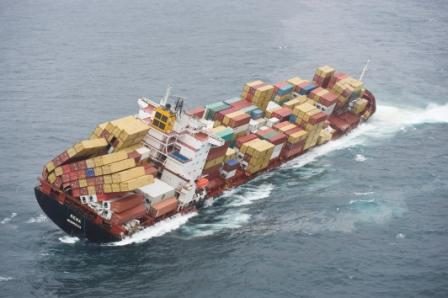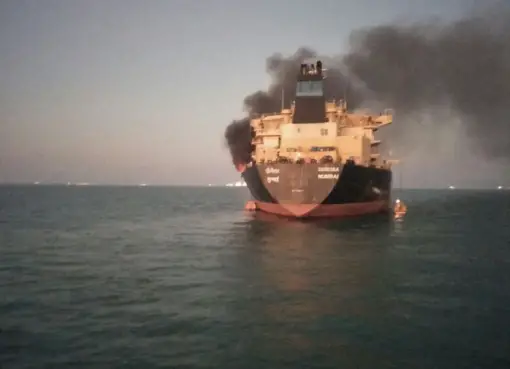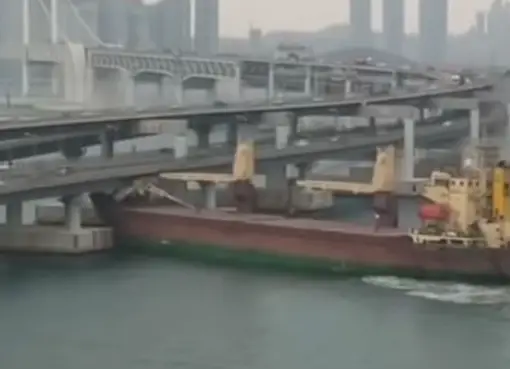A contract of marine or boat insurance is a contract whereby the insurer undertakes to indemnify the assured, in a manner and extent thereby agreed, against marine losses caused by maritime adventure or maritime peril.
Main features of marine insurance:
- Insurable interest: in order to claim for a loss or damage, the insured must have a financial interest in the insured property. A person can be said to have an insurable interest in the property insured when he suffers a loss if the property is lost or damaged or when he gains a profit when the property insured is safe and is in continuous existence. Every person who is engaged in a marine adventure is said to have an insurable interest. Example: interest of the shipowner in his ship, an interest of master and crew for there wages, an interest of the insurance company in the property insured.
- Utmost good faith: a contract of marine insurance is a contract based upon utmost good faith and if the utmost good faith is not exercised by either party, the contract may be avoided by the other party. The duty of utmost good faith is required by both the parties. The insurer must deal with all claims fairly and expeditiously and must be able to pay for potential claims. The assured must disclose all material facts about the condition of the insured property which the insurer knows or ought to know. Material facts are those facts which could affect the judgment of a prudent underwriter in deciding whether to accept the risk of insuring the property and at what rate of premium and to what terms and conditions.
- Indemnity: an insurance contract is a contract of indemnity. Such an insurance contract will make good a loss or damage in such a manner that the assured is neither better-off nor worse-off as a result of the loss. In other words, the assured is placed in the same financial position as he was in immediately before the loss. Thus the principle of indemnity prevents the insurer from making a profit out of his loss or gaining any benefit out of the insurance.
- Subrogation: it is the right of the insurer, after he pays for the loss, to assume the rights of the insured to recover this loss from the responsible party. This prevents the insured from collecting the claims twice, thus reducing the cost of claims. The insurer can sue a responsible party in the name of the insured up to the amount of the settlement.
Maritime adventure exists where insurable property such as ship, goods, movables or earnings of vessel i.e. Freight, commission etc are exposed to maritime perils or liability to the third party by reason of maritime perils.
Maritime adventure is perils consequent on, or incidental to, navigation of the sea. Some examples are perils of the sea, fire, war perils, pirates, thieves, barratry, restraints, detainments of princes and people etc.
Marine policy
A contract of marine insurance shall not be admitted in evidence unless it is embodied in a marine policy in accordance with the marine insurance act.
A marine policy must specify:
- Name of the insured,
- Subject matter insured and the risk insured against,
- The voyage, or period or both, as the case may be, covered by the insurance,
- The sum or sums insured,
- The name or names of insurer or insurers,
- A marine policy must be signed by or on behalf of the insurer.

Types of policies:
- All risk policies: these types of policies cover both marine and non-marine property and generally insure against “all risks”. The word “all risks” is actually a misnomer as it has got many exclusions. In an “all risks” policy the onus of proving that there was an accident is on the assured. Once the assured has given this proof, it is up to the insurer to prove that the accident occurred due to one of the excluded perils, if the insurer does not wish to pay for the claims. The only policy which is an actual “all risk” policy is the “builders all risks policy” which covers a ship under construction. Apart from this all other policies are actually “named perils policy”.
- Named perils policy: these types of policies cover both marine and non-marine properties and generally insure against “named perils” which are mentioned in the policy. It also mentions several exclusions. In case of a “names perils policy”the onus of proving that there was an accident and it was due to an assured peril is the assured. The insurer has to prove that the accident was due to one of the perils excluded if he does not want to pay the claim.
- Open policy: generally refer to marine policies on goods in transit. Instead of taking out individual policies on each shipment an open policy is made. This facilitates the assured to declare each shipment to the insurer who then gives a cover note. The terms and conditions of the policy are agreed in advance and it is generally for a period of 1 year.
- Floating policies: this type of policy describes, in general, the terms and conditions and leaves the name is the ship or goods or other particulars to be declared by the assured. These are not in use anymore, instead “fleet policies” are used which covers a whole fleet of ships of a shipowner. New ships acquired may be declared to the insurer and added on to the premium to be agreed. The open policies on goods in transit are a form of “floating policies” which are sometimes known as “declaration policies”.
- Voyage and time policies: when the contract is to ensure the property at or from or from one place to another or other, it is known as a voyage policy. When the contract is to ensure the property for a given period of time, the policy is termed as a time policy. A commonly used period for a time policy is about 12 months.
Warranty
A warranty is an assurance from the insured that a specified state of affairs or conditions will be maintained and which shall not be done for the duration of existence of the policy. A warranty need not be written in a particular set of words but can be express or implied.
Express warranty
It can be any form of words from which the intention of warranty is clear. It may be included in the policy itself or must be contained in some other document whose reference is there in the policy.
Implied warranty
It is a warranty which is not written anywhere but is implied upon by the law.
Examples of implied warranty:
- The vessel must be seaworthy at the commencement of the voyage and at the start of each stage if the voyage is in stages.
- The voyage must be lawful and as far as the insured can control, be carried out in a lawful manner.
Seaworthiness of the vessel
It is an implied warranty that at the commencement of the voyage or at the start of each stage of the voyage, the vessel must be seaworthy i.e. It must be fit for the particular adventure and ready to encounter all ordinary perils of the sea which the vessel may encounter in the insured voyage.
When the vessel enters a port she should be reasonably fit to encounter all ordinary perils of the port.
Institute warranties
Institute warranty is used to fix the trading limits of the vessels which are not engaged on a fixed trade but are tramping worldwide. The reason being, navigation is these restricted areas during these time increase the risk of the insurer.
There are 6 institute warranties:
- First 4 put a ban on trading in certain ice-bound areas in the far northbound. (for some all the year round and for some only in the winter season).
- The fifth prohibits trading to certain antarctic regions.
- The sixth prohibits the carriage of Indian coal from 1st March to 30th September except to certain near Asiatic ports between some dates.
If any warranty is breached, then the insurer will not be liable for any loss after the warranty was breached.
Types of loss
- Actual total loss: it is a loss or damage to entire property (physical total loss) which can occur in 3 ways:
- All property is destroyed,
- All property has been so damaged that it ceases to be the thing it was initially insured. (cement becoming concrete due to damage by water).
- The ship is irretrievable and unavailable to owners even though the property may not be destroyed.
- Constructive total loss: also known as a commercial total loss. Means that the cost of repair or replacement is more than the policy limit. The property must be reasonably abandoned, this means it should be abandoned because its actual total loss is inevitable or it would require an expenditure exceeding the saved value if attempting to prevent a total loss. The insured must abandon his interest to the insurer before the claim. The insurer is entitled to take over the property if desired.
- Presumed total loss: when a ship engaged on a maritime adventure has been missing for a reasonable period of time, an actual total loss may be presumed.
- Partial loss: when the loss is less than the total amount of insurance or when loss/damage has been taken place only to some part of the property.
Notice of abandonment
According to the marine insurance act, when the assured elects to abandon the interest to the insurer, he must give a notice of abandonment. If he fails to do so, it will be treated as a partial loss. Such a notice can be given in writing or by word of mouth or by both. It should be giving a reasonable diligence after the receipt of a reliable information of the loss. The assured can take time when the information is of a doubtful character. The acceptance of the notice may be either express or implied from the conduct of the insurer. A mere silence by the insurer shall not be accepted. When such a notice is accepted, it is irrevocable.
Institute clause
Institute of London underwriters is an association of insurers who came together in 1884 to recommend wording and clauses to be inserted into various insurance policies. These clauses have been well recognized by the shipowners and insurers as having been stood the test of time and also that the wordings of the clauses serve to settle claims satisfactorily, in fairness to both parties. These clauses can be adopted by any insurance company to be inserted in the policies. The clauses are;
- Itc hulls (institute time clauses, meant for h & m time policies) – 26 clauses,
- Ivc hulls (institute voyage clauses, meant for h & m voyage policies) – 23 clauses,
- Icc (institute cargo clauses, form a,b and c)
Sister ship clause
If two vessels belonging to the same owner collide, legalities may arise as to the settlement of claims, compensations etc, considering that the owner of both the vessels is the same. Under this clause, such a case will be treated as if both the vessels belong to different owners.
3/4th liability clause
This clause is a running down clause, applies only if two vessels were under propulsion. In this clause the insurer indemnifies the assured for 3/4th of the sums paid by the assured as his legal liability to another vessel as a result of a collision. Damages given below are agreed to be indemnified;
- Loss or damage to another vessel,
- Loss or damage to property of another vessel,
- Delay to such other vessel or property thereon,
- General average, salvage, salvage under the contract of any such vessel.
The above amount is indemnified to the extent of liability of the assured vessel.



